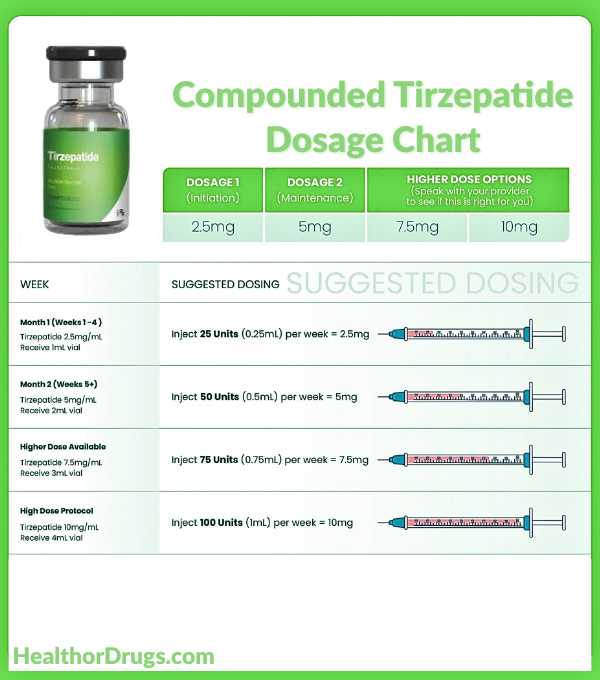Massage therapy is excellent for reducing stress, easing pain, and improving well-being. But does United Healthcare cover it? This article breaks down whether massage therapy is included in their plans, what conditions might qualify, and how to get the most out of your insurance benefits. We’ll make it simple to understand your plan and explore your options easily.
What Is Massage Therapy?
Massage therapy is a way to relax your muscles, reduce stress, and help your body heal. It’s often used for things like back pain, stress relief, or recovering from injuries. Licensed professionals provide massages in places like clinics, spas, or wellness centres. There are different types, like Swedish massage to help you relax, deep tissue for tighter muscles, and sports massage to help with recovery after exercise.
It’s important to understand the basics of insurance because companies like United Healthcare consider these details when deciding what services your plan will cover.
Understanding United Healthcare Coverage
United Healthcare, one of the biggest health insurance companies in the U.S., offers different plans like employer-sponsored, individual, and Medicare options. Whether massage therapy is covered depends on your specific plan. In most cases, insurance only covers treatments that are considered “medically necessary.” So, if your doctor prescribes massage therapy for a medical condition, it might be covered.
If there’s no medical reason, it’s usually considered a wellness service and might not be covered by your benefits. Check your plan details or ask your provider to know for sure.
Does United Healthcare Cover Massage Therapy?
United Healthcare might cover massage therapy, but it depends on your plan and why you need it. Usually, it’s covered if a doctor prescribes it for a medical condition like chronic pain, fibromyalgia, or a sports injury. United Healthcare might cover massage therapy if it’s part of a treatment plan and done by a licensed professional.
But massages for relaxation or general wellness usually aren’t covered. Check your plan details and get a doctor’s referral to see if you qualify for coverage.
Related: Does Blue Cross Blue Shield Cover Massage Therapy?
When Is Massage Therapy Considered Medically Necessary?
United Healthcare usually covers massage therapy if your doctor or chiropractor says it’s medically necessary. This means it’s needed to treat a specific health issue like chronic back pain, a muscle injury, or recovering from surgery. You’ll likely need a note or documentation from your provider to qualify.
United Healthcare may check your doctor’s prescription and medical records to make sure the therapy is part of a plan to improve your health. But, if the massage is just for stress relief and not tied to a medical condition, it’s probably not covered.
Types of Plans and Coverage Variations
United Healthcare offers different plans like HMO, PPO, and Medicare Advantage, each covering massage therapy differently. PPO plans are more flexible and let you see out-of-network providers, while HMO plans usually need a referral for coverage.
Some Medicare Advantage plans might cover massage therapy as part of their extra benefits. Some may also include wellness programs that offer alternative treatments like massage. To know exactly what’s covered, check your plan’s benefits summary.
Employer-Sponsored Plans
United Healthcare is a popular option for employer health insurance, but coverage can vary a lot depending on the plan. Some plans might cover things like massage therapy, while others don’t. To find out what’s included in your plan, check with your HR department or plan administrator for the details.
Individual and Family Plans
Whether massage therapy is covered depends on your specific plan. Some plans include it, while others only cover regular medical treatments. Check your policy or contact United Healthcare to find out what’s covered.
Medicare Advantage Plans
United Healthcare’s Medicare Advantage plans can help improve your health with wellness benefits. Some plans may even cover massage therapy for conditions like arthritis or chronic pain. Check your plan’s benefits guide or contact United Healthcare to see if it’s included.
Steps to Verify Massage Therapy Coverage
Want to know if United Healthcare covers massage therapy? Here’s how to find out and avoid surprises:
- Call United Healthcare: Use the customer service number on your insurance card to ask about massage therapy coverage.
- Check Your Plan: Look at your benefits summary or member handbook for details on what’s covered.
- Get a Doctor’s Note: If medically necessary, ask your doctor for a prescription for massage therapy.
- Use In-Network Providers: Choosing a licensed therapist in United Healthcare’s network increases your chances of coverage.
By following these steps, you’ll know exactly what’s covered and can use your benefits without any unexpected costs. Always double-check with United Healthcare before starting.
What to Expect from the Approval Process
If massage therapy is medically necessary, United Healthcare might need to approve it first. Your doctor will need to provide proof that you need the treatment. This approval usually takes a few days to a week. Once approved, they’ll let you know how many sessions are covered and if you’ll have any co-pays or deductibles.
If your request is denied, you can appeal the decision by providing more medical evidence. Understanding this process helps you plan your treatment better and avoid surprises.
Costs Associated with Massage Therapy
If United Healthcare covers massage therapy, you might still have to pay some costs, like co-pays, co-insurance, or deductibles, depending on your plan. Massage sessions usually cost between $60 and $120, so it can get pricey without coverage.
If it’s not covered, you’ll likely pay the full amount. But some plans offer discounts for out-of-network providers or wellness perks. It’s a good idea to check your plan so you can plan your budget.
Table: Estimated Costs for Massage Therapy
| Scenario | Estimated Cost | Notes |
|---|---|---|
| Covered with Co-pay | $10–$50 per session | Depends on the plan’s co-pay structure |
| Out-of-Network Provider | $60–$120 per session | Full cost if not covered by insurance |
| Wellness Program Discount | 10–20% off standard rates | Available in some United Healthcare plans |
This table shows estimated costs for different coverage options. Be sure to check with your provider and United Healthcare for accurate pricing.
Alternatives to Insurance Coverage
If United Healthcare doesn’t cover massage therapy, don’t worry, there are other ways to make it more affordable. Here are a few options to check out:
- Health Savings Account (HSA): If your doctor recommends massage therapy, you can use pre-tax HSA money to pay for it.
- Wellness Discounts: Some United Healthcare plans offer deals on wellness services, including massages.
- Community Clinics: Look for local clinics that offer low-cost or sliding-scale massage therapy.
These options can help you enjoy massage therapy without spending too much. Just make sure to double-check what’s covered with your plan or provider.
Tips for Maximising Your Benefits
Make the most of your United Healthcare plan with these simple tips to save money and get better coverage:
- Get a doctor’s prescription for massage therapy, which can help with coverage.
- Stick to in-network providers to avoid paying more.
- Keep track of all your conversations with United Healthcare for reference.
- Check if they offer wellness programs or discounts for massage therapy.
These steps can help you access the care you need and keep your costs down. Knowing your options makes it easier to use your benefits.
Common Conditions Covered by Massage Therapy
United Healthcare might pay for massage therapy if it’s for specific medical conditions. Usually, you’ll need a doctor to diagnose the issue and write a prescription. Some conditions that might qualify include:
- Ongoing back or neck pain
- Fibromyalgia or arthritis
- Recovery after surgery
- Sports injuries or muscle strains
If you think massage therapy could help, ask your doctor if it can be part of your treatment plan. This can improve your chances of getting it covered.
Limitations and Exclusions
United Healthcare plans differ when it comes to covering massage therapy. Some plans don’t cover it at all, while others might limit how many sessions you can have or require you to see certain providers.
Non-medical massages, like spa treatments for relaxation, are usually not covered. To avoid surprise costs, check the exclusions in your plan and confirm what’s included.
How to Find a Qualified Massage Therapist
Finding the right massage therapist is important for good care and insurance coverage. If you have United Healthcare, they usually require therapists to be in-network and licensed. Here’s how to find one:
- Check United Healthcare’s provider directory for in-network therapists.
- Make sure your state permits the therapist.
- Ask if they have experience with your condition, like chronic pain or injury recovery.
A licensed, experienced therapist will help you get the best treatment and make it easier to use your insurance.
Summary
Massage therapy can help with pain, stress, and recovery, but whether United Healthcare covers it depends on your plan and if it’s medically necessary. Usually, it’s covered if a doctor prescribes it and you use an in-network therapist. To avoid surprise costs, check your insurance plan, get a prescription if needed, and see if pre-authorisation is required.
If your plan doesn’t cover it, you can look into options like Health Savings Accounts (HSAs) or wellness discounts to save money on massage therapy. Knowing your insurance and planning can help you get the care you need without overspending.
FAQ
Does United Healthcare pay for massage therapy? .
Usually, United Healthcare doesn’t cover massages for relaxation or general wellness. To get coverage, you’ll often need a doctor’s prescription and a medical reason. Check your plan for any wellness discounts that might help.
How can I tell if my plan covers massage therapy?
Look at your plan’s summary of benefits or call United Healthcare’s customer service. You might need a doctor’s prescription and approval before starting. Always double-check before booking.
Can I use my HSA to pay for massage therapy?
Yes, if a doctor prescribes it to treat a medical condition. Check with your HSA provider to make sure it qualifies. Regular massages without a prescription usually don’t count.
What if United Healthcare denies my massage therapy claim?
If your claim gets denied, ask why. Review your plan’s appeal process and have your doctor provide extra medical documents if needed. Sometimes, submitting more evidence can help overturn the decision.
How many massage therapy sessions are covered?
It depends on your plan. Some plans limit how many sessions you can have each year. Check your plan details, and note that pre-approval might also set limits on the number of sessions allowed.









